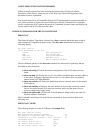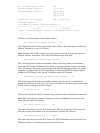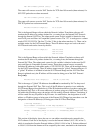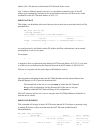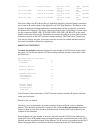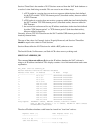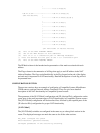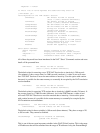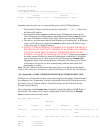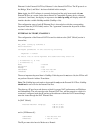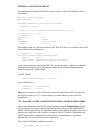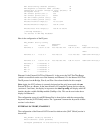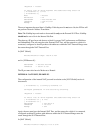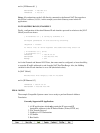(defined next). The NAT Router and the LANs and or WANs to which it is connected must
be configured so that IP packets with addresses in the InternalRange enter the NAT Router
through the Internal NAT Port.
This variable is parsed, and can be entered, using the same syntaxes used for the IP addresses
in the IP filters with one important addition. An inclusive range of addresses can be defined
using a dash notation (V.W.X.{Y−Z}). This was previously shown in the NAT PassThru
Range part of the show command section. For example, an Internal Range could be entered
as 10.5.3.{1−30}. This would be parsed as the IP addresses 10.5.3.1, 10.5.3.2, ..... 10.5.3.29,
and 10.5.3.30 (and every IP address in between, but omitted from listing here). Each of these
parsed addresses would have a mask of /32 or 255.255.255.255.
This is a multiple variable and can have several different values/ranges entered into it.
ExternalRange Strings for External IP addresses,
(parsed like filters)
This is the most important variable in the [NAT Global] section. Again, the NAT Router and
the LANs and or WANs to which is connected must be configured such that IP packets with
addresses in the ExternalRange enter the NAT Router through the External NAT Port.
This variable is parsed like the InternalRange (like IP filters and including the dash notation)
and is a multiple variable which can have several different values/ranges entered into it.
PassThruRange Strings for not NATTED IP addresses,
(parsed like filters)
This is not always used in a NAT Router, unless the user is putting both a NAT Network and
a LAN with "global" IP addresses behind the NAT Router and its External NAT Port (see
Example Two presented earlier). This variable allows IP packets traveling through the NAT
External Port to be routed without having their IP addresses translated.
This variable is also parsed like the InternalRange and ExternalRange (like IP filters and
including the dash notation) and is a multiple variable that can have several different
values/ranges entered into it.
If an IP address or range of addresses is included in both the ExternalRange (NAT External
Range) and PassThruRange (NAT PassThru Range), NAT will treat the IP address(es) as
being members of the ExternalRange (NAT External Range).
RespondICMP NAT interface responses to ICMP packets
This allows external workstations/routers to ping workstations/routers in the NAT Network if
a one−to−one translation pair in the NAT Map Database will allow such a translation (again,
these pairs have been briefly described before, and will be detailed in EDIT CONFIG NAT
MAP). This keyword is either On or Off. The default value is On. The workstation/router on
the Internal NAT Network will not be allowed to respond to a ping if RespondICMP is Off.
RouterAddr Allow communication with a NAT Router
through router IP ports
This allows the router to accept IP packets destined for the IP addresses of the NAT Router's
ports, and to transmit IP packets sourced from the IP addresses of the NAT Router's ports. In
short, it allows the user to ping or establish a Telnet session with the NAT Router if this
variable is set to On (the current default value). If this variable is set to Off, the user will only



